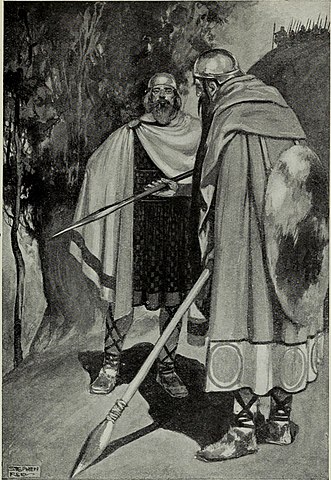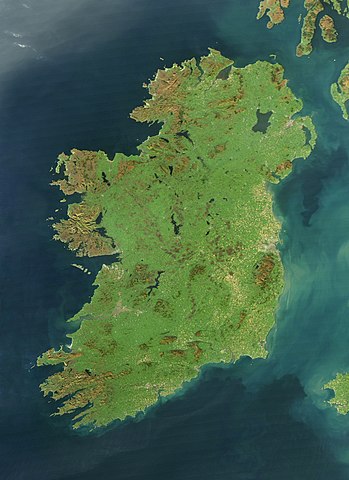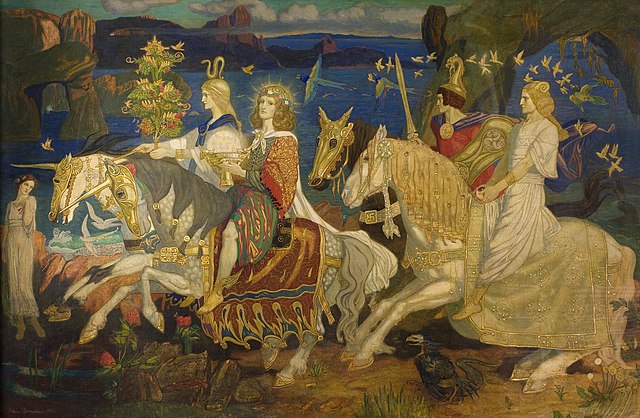Who were the Fir Bolg?
Who were the Fir Bolg in Irish Mythology? From the enchanting tales of the Tuatha Dé Danann to the mysterious legends of the banshee, Irish folklore is full of fascinating characters and stories passed down through generations.
Among these legendary figures is the Fir Bolg, a group often overshadowed by more famous mythological beings but nonetheless crucial to Ireland’s ancient tales.
In this blog post, we’ll explore who the Fir Bolg were, their legends, and what made them significant in Irish mythology.
We’ll examine their origins, role as one of Ireland’s earliest settlers, and interactions with other mythical groups.
By the end, you’ll have a clearer picture of why the Fir Bolg deserve a place in the spotlight of Ireland’s rich mythological tapestry.
Don’t forget to read my article on Irish Myths and Legends for more information.
Please keep in mind that this information is taken from works that were highly edited by early Christian settlers in Ireland so stories may have been adapted to forward religious goals in Ireland.
Table of Contents
Origins of the Fir Bolg

The origins of the Fir Bolg are wrapped in ancient myth and legend, making them a fascinating part of Ireland’s mythical past. According to Irish mythology, the Fir Bolg were one of the earliest groups to settle in Ireland long before the more famous Tuatha Dé Danann arrived.
The name “Fir Bolg” is believed to have meant the “Men of the Bag,” which is thought to refer to their traditional way of life. There is some debate about the translation of this name as Fir Bolg in the Irish language translates to Belly Men (Fir=men and Bolg=belly). Mythology tells us that the Fir Bolg may have originated in Greece. They were said to have been enslaved by the Greeks and later escaped, eventually making their way to Ireland. This journey is a part of their rich backstory, highlighting their resilience and quest for a new homeland.
Another version of their origin story suggests that the Fir Bolg were the descendants of the Muintir Nemed (people of Nemed). This legendary group left the Island of Ireland, split into three groups and travelled North and East to safety after a great battle with the Fomorians.
The group that travelled North later became the Tuatha Dé Danann. The second group travelled to England and became the descendants of the Britons, and the third travelled to the Mediterranean.
After a long period of hardship, during which the third group lost many at sea, they finally reached Greece, where they were enslaved.
As slaves, they were made to carry bags of soil on their heads, which gave them their name, the Fir Bolg (Men of the Bag).
After years of turmoil, they escaped and returned to Ireland, where they established themselves and became its rulers. This settlement began their role as one of Ireland’s early mythological tribes.
These tales not only describe the Fir Bolg’s origins but also set the stage for their significant role in the unfolding mythological drama of ancient Ireland.
Their arrival and settlement in Ireland are pivotal in understanding the broader tapestry of Irish myths, making their story an essential piece of Ireland’s legendary history.
The Role of the Fir Bolg in Irish Mythology

After their long journey and settlement in Ireland, they became the land’s early rulers. But their story is more than just about who came first; it’s also about how they interacted with other mythical beings and shaped the island’s legendary landscape.
When the Fir Bolg arrived in Ireland, they divided the land amongst their five chieftains, creating five provinces. The seat of the high king is located on the Hills of Tara, where they ruled the whole island.
They were known for their strong warrior culture and organized society. They built impressive forts and had a well-developed way of life, reflecting their long history and deep connection to the land. Their interactions with other mythical groups played a significant role in their story.
The most significant chapter in the Fir Bolg’s story came with the arrival of the Tuatha Dé Danann. This new group of magical beings, known for their magic skills and otherworldly attributes, challenged the Fir Bolg for control of the land. The clash between the Fir Bolg and the Tuatha Dé Danann is one of the central myths of Irish legend.
The most famous story recounts the battles between these two groups, which ultimately led to the Fir Bolg’s defeat by the Tuatha Dé Danann. Despite their defeat, the Fir Bolg’s presence in Irish mythology is crucial. They are remembered as the people who came before the Tuatha Dé Danann, and their legacy continues to be an integral part of Ireland’s mythical heritage.
Please read my article on the Tuatha Dé Danann for more detailed information.
Conflict: Fir Bolg vs the Tuatha Dé Danann

The arrival of the Tuatha Dé Danann in Ireland marked a turning point in the mythology of ancient Ireland. According to legend, the Tuatha Dé Danann were a magical and powerful race who came to Ireland from the skies. They were known for their extraordinary abilities, including mastery of magic, and they quickly became central figures in Irish mythology.
The Tuatha Dé Danann’s arrival in Ireland led to a dramatic clash with the Fir Bolg, who were already settled in the land. This conflict is famously known as the “Battle of Moytura.”
The story is told that the Tuatha Dé Danann give the Fir Bolg the option of surrendering Ireland and keeping half of the country to themselves or fighting and losing it all.
The Fir Bolg, being proud warriors, choose to fight the Tuatha, and a great battle commences. During the battle, the king of the Tuatha, King Nuada, loses his arm in a fight with the champion of the Fir Bolg. The battle finally ends with the killing of the king of the Fir Bolg, Eochaid.
Losing the battle, some stories claim the Fir Bolg were forced to leave the island, while others say they settled in the West of Ireland. It is claimed that the Tuatha, finding them worthy opponents, allowed them to settle in the province of Connacht, where they established themselves and continued to live. Still, they were no longer the dominant power in the land.
The conflict between the Fir Bolg and the Tuatha Dé Danann and its subsequent relocation are key elements in Ireland’s mythical history. These events shaped the way future myths and legends developed and underscore the importance of the Fir Bolg in the broader tapestry of Ireland’s ancient stories.
End of the Fir Bolg in Ireland
The Fir Bolg hold a unique and vital place in Irish mythology. Although they are often overshadowed by other legendary figures like the Tuatha Dé Danann, their role in Ireland’s mythical history is significant. As one of the earliest groups believed to have settled in Ireland, the Fir Bolg shaped the island’s ancient stories.
Their story of arrival, settlement, and eventual conflict with the Tuatha Dé Danann provides a crucial backdrop to the rich tapestry of Irish legends. The Battle of Moytura, in which they fought against the magical Tuatha Dé Danann, highlights their bravery and struggle to maintain their place in a rapidly changing mythical landscape.
Even after their defeat, the Fir Bolg continued to be a part of Ireland’s mythological world, establishing themselves in Connacht and leaving a lasting legacy. Their presence in the myths reminds us of Ireland’s legendary past’s complex and layered nature.
By exploring the story of the Fir Bolg, we gain a deeper understanding of the ancient tales that have shaped Irish culture and folklore. Their story is a testament to the enduring power of myth and how these ancient narratives continue to resonate through the ages.
Further Reading
If you wish to learn more about Irish heritage, here are three recommended books for further reading on the Fir Bolg and Irish mythology:
“The Mythology of Ireland“ by Charles Squire
This classic work comprehensively overviews Irish myths, including the Fir Bolg. It explores their place within the broader context of Irish folklore.
“Irish Mythology“ by Peter Berresford Ellis
Ellis offers a detailed exploration of Irish mythology, including the history and legends of groups like the Fir Bolg. The book is accessible and informative for readers interested in the depth of Irish myths.
“Celtic Mythology: A Concise Guide to the Gods, Sagas, and Beliefs“ by Philip Freeman
Freeman’s book provides a clear and engaging introduction to Celtic myths and legends, including the Fir Bolg. It’s an excellent resource for understanding the mythological background and cultural context.
These books should give you a solid foundation for exploring the Fir Bolg and other aspects of Irish mythology.
